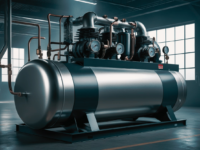Solar panel installations in industrial applications generally require coolant. This specialized coolant (and even water coolant) does need to be tested regularly by an accredited lab in order to maintain performance and prevent damage. There are three types of industrial solar installations that require coolant and testing. Hybrid Solar Panels (PV/T Systems): These combine photovoltaic…
Read more
Staying on Track with Oil Analysis: Eurofins TestOil Can Help
To help customers consistently submit oil samples for testing, oil analysis labs rely on a strategic combination of automated tools and personalized engagement strategies. These methods are designed to make the sampling process as easy and seamless as possible, minimizing delays and ensuring equipment health is accurately monitored on schedule.High-quality labs such as Eurofins TestOil…
Read more
Benefits of Consistent Oil Analysis: Cost-Savings are Just the Beginning
In the face of tightening budgets, it can be tempting to trim what may seem like non-essential expenses—including industrial oil analysis. Yet research shows that cutting back on this critical practice is a costly mistake. Common cost-saving benefits supported by research include:• Reduced Downtime: Up to 50%• Lower Maintenance Costs: 30–40% savings• Extended Equipment Life:…
Read more
Fuel, Oil and Coolant Analysis for Backup Generators

Generators are critical in applications where power continuity is essential for safety, security, operations, and/or data integrity. Following are some vital applications that rely heavily on generators: • Hospitals & Healthcare Facilities: Lives depend on uninterrupted power for ventilators, surgical equipment, medication refrigeration, and lighting during surgeries or emergencies.• Data Centers: Data loss or server…
Read more
Oil Testing for Compressors Explained by Eurofins TestOil

The oil in compressors needs to be tested regularly to ensure the system operates efficiently and reliably. This analysis is crucial in order to monitor the oil’s condition, detect contamination, prevent damage and optimize the frequency of oil changes. Benefits include: • Early Detection of Problems: Oil sampling can help detect potential problems before they…
Read more
Grease Analysis—Essential for Manufacturing Robotics

Grease analysis in terms of robotics involves evaluating the condition of lubricating grease used in components such as joints, bearings, and gears. It helps maximize performance, extend the lifespan of robotics, and prevent unplanned downtime.Grease analysis details the condition of the grease without requiring a full grease change. This allows operators to delay costly changes…
Read more

